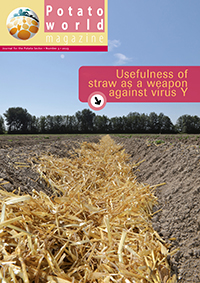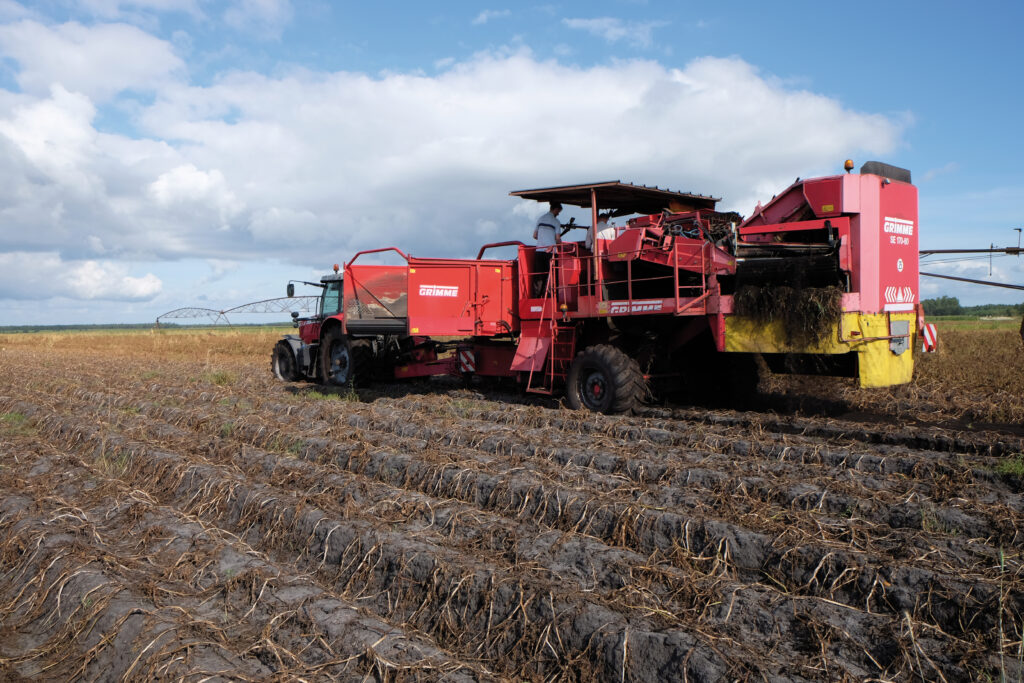Already a subscriber? Activate your premium account

Potatoworld Magazine

When you talk to potato farmers here in the Netherlands they will tell you that the weather in 2017 was special. The start was good then we had a dry spell, especially in the south of the Netherlands and Belgium and crops were lagging behind. During summer the weather was favorable for production and crops were growing well. In September however we had heavy rain showers and in large parts of the country and potato fields were flooded for a shorter or longer time. Those of you who visited ‘PotatoEurope’ were able to experience this in person. Last year the weather was also special the spring was too cold and in June potato crops were damaged in the south east by hail and rain storms.
Actually as long as I remember, every year had special weather, sometimes early in the year, sometimes in the summer and sometimes late in the season. Not always affecting the potato crop but it often does. Crops are flooded and rotting, crops are too dry and damaged by drought, hail storms destroy the foliage etc. The last decennia the more extreme weather conditions are attributed to climate change. By studying this climate change can we better deal with this weather in the future?
In this discussion we have to define the difference between climate and weather because these two are often mixed up. Weather is defined as the state of the atmosphere at a particular place and time as regards heat, cloudiness, dryness, sunshine, wind, rain, etc. Climate however is defined as the generally prevailing weather conditions of a region, throughout the year, averaged over a series of years. For this period often a period of 30 years is taken. So by its definition climate will be less extreme than weather because it is an average of this weather.

The majority of scientist are agreeing that climate has been changing over the last decades and will change the coming decades. In potato science different authors have made studies about potato production and climate change (Daccache, Weatherhead, Stalham, & Knox, 2011; Haverkort & Verhagen, 2008; Hijmans, 2003). They all conclude that the average conditions for potato production are improving in North-west Europe. Theoretically the growing season will become longer, there will be less days with frost, higher temperatures which are favorable for potato growth in spring and autumn. They also agree that North western Europe is going to be dryer. The third aspect of climate change is that there will be more and heavier rain showers during the growing season. How does this help the farmer who has to deal with the day to day weather?
To prevent drought damage, a farmer can invest in irrigation equipment, especially when he farms on higher sandy soils. To deal with the heavier rain showers he can invest in better drainage facilities with higher capacity. Or in the combination of the two to be insured of a more secure production. One or the other way the cost price of potatoes is increasing. He can take the risk of planting earlier and harvesting later, but still has the risk that the crop is affected by frost or that it is too wet too harvest. Even if we know a lot more about climate change not every risk can be foreseen or dealt with in advance.
I think that the farmer is helped best with research about the risks of day to day weather conditions in combination with a better weather forecast. This will enable him to use his farming skills and experience to deal with this uncertain weather and manage his crop in the best way.
Dr. Ir. Peter Kooman
Professor Potato supply chain and sector innovation
CAH Vilentum University of Applied Sciences
p.kooman@cahvilentum.nl
Daccache, A., Weatherhead, E., Stalham, M., & Knox, J. (2011). Impacts of climate change on irrigated potato production in a humid climate. Agricultural and Forest Meteorology, 151(12), 1641-1653.
Haverkort, A. J., & Verhagen, A. (2008). Climate Change and Its Repercussions for the Potato Supply Chain. Potato Research, 51(3-4), 223-237. doi:10.1007/s11540-008-9107-0
Hijmans, R. (2003). The effect of climate change on global potato production. American Journal of Potato Research, 80(4), 271-279. doi:10.1007/BF02855363
Events
©2015 - 2024 Potatoworld | Webdesign and realisation COMMPRO